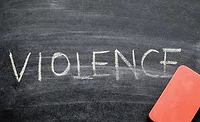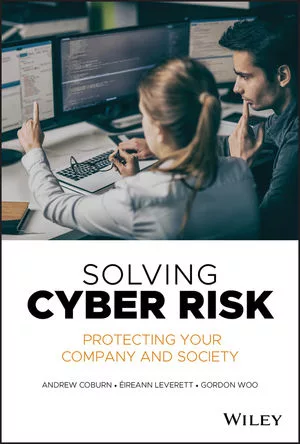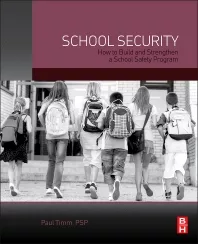Breaking the isolation barriers: How your company can support its employees experiencing domestic violence

Disease pandemics can create a type of stress similar to that of other natural disasters. They can foster a fear of the unknown and can be prolonged, and our brains struggle to deal with it. At the height of the COVID-19 pandemic earlier this year, billions of people worldwide were locked into their homes, often mandated by local and federal governments to remain “safe at home” in an effort to slow the spread of the virus. Unfortunately, this exacerbated another existing global pandemic: domestic violence.
Many people hear the term ‘domestic violence’ and automatically imagine a physically abusive relationship. But the truth of the matter is that domestic violence involves other facets which may be present, and which are heightened by the threat or use of physical violence. While someone may not be experiencing physical abuse, she/he could still be subject to verbal, emotional, or financial abuse, stalking, and other forms of violence, harassment, and threats. This creates a complex and challenging situation for the survivor.
It is important to remember that domestic violence was widespread long before the COVID-19 outbreak. Many experts refer to this issue as the “invisible pandemic”. Add the rising numbers of sick people, growing unemployment, increased anxiety and financial stress, and limited access to community resources, and you have yourself a recipe for further increased violence. Pandemics like COVID-19 don’t cause domestic violence- the violence is solely the choice and responsibility of the abuser. But external stressors caused by the virus can lead to an escalation of abuse, because abusers will blame the external pressures to justify their actions.
Domestic violence is known to increase in times of natural disasters and crises. Survivors find themselves isolated in an already turbulent home, without the ability to seek help safely, or access resources or friend and family networks. By isolating their partner from any outside contact, abusers assert even more control over their partner’s entire environment.
Employer Support for Domestic Violence Awareness and Prevention
While traditionally seen solely as a private problem, domestic violence has the potential to significantly impact workplace safety and productivity, according to ASIS International (2020) Standard: Workplace Violence and Active Assailant-Prevention, Intervention, and Response. Domestic violence issues in the home have a tendency to spill over into the workplace. Abusers may use their work phone or email to harass their partner. They may also show up to their partner’s place of employment uninvited, creating safety issues for not only the partner, but the partner’s co-workers as well. Abusers see their survivor’s employment as a way that survivor can gain independence by having their own income and developing a support network outside of the home, which abusers perceive as a threat to their ability to maintain control in the relationship. In addition to its impact on safety, domestic violence can take an additional toll in the workplace through increased health care plan costs, lower morale, increased absenteeism, inability to concentrate and decreased performance by employees.
Employees need to know that their employer is available and willing to support their journey to safety. Especially with COVID-19 restrictions still enforcing a remote working lifestyle for many, employees need to be reminded that even though they are not working on their employer’s premises, does not mean that they are alone. It is up to the employer to ensure their employees are able to operate in a safe environment and perform at their highest capacity; this includes remote workers as well. Affording measures to prevent domestic violence-related incidents in the workplace fall within an employer’s legal obligation to provide a safe workplace and prevent violence, according to the OSHA General Duty Clause. It is important to take into consideration any local or state laws pertaining to domestic violence when employers design their workplace violence program and its corresponding policies and procedures, but also balance what the survivor believes is safest for their unique situation.
Employers should be allies in supporting their employees by connecting them with the resources they need. Local domestic violence service centers can aid in providing training for staff on how to recognize abuse, as well as help in developing policies to support survivors of domestic violence. These centers can also use this partnership to provide awareness and on-site support for the company’s employees. Examples of different ways an employer can help support their employees is by: providing approved time off because of abuse; providing security escorts to and from their car; and being willing to connect them with appropriate resources (i.e. safety planning, do not admit lists for employer property(ies), employee assistance programs, etc.). There are likely employees who need this support, but who aren’t willing to come forward because they are unsure as to how their employer will respond. Will they be ostracized for admitting they’re experiencing domestic violence? Will this admission prevent them from getting that promotion down the road? Sometimes we forget that stress and struggle can impact anyone and everyone in one way or another. Being open with your workforce and communicating the resources that are available can open up a truly lifesaving avenue of support for employees in need.
Not all survivors of domestic violence experiences are the same, so not all resources will work equally. An employer needs to appreciate that survivors are often experiencing life-threatening abuse and face various economic barriers, different levels of exhaustion from the stress of living in abuse, and so much more in deciding how to navigate their situation. It is important the employer is available to assist the survivor in their path to freedom, while helping keep them safe, but the employer must also respect that the survivor is the person who should decide what path to ultimately take.
In a company, it is not the responsibility of one department or individual to assist employees experiencing domestic violence. We must all support our coworkers as they seek safety from domestic violence and help reinforce the availability of resources which may assist them in doing so. The most effective approach to an internal domestic violence policy is to include the knowledge and expertise of security, human resources, and legal departments, and domestic violence experts, with the support of senior management.
Case Study
One survivor of domestic violence provided her testimony of the experience she had with domestic violence and how, when she presented her circumstances to her employer, she was assisted in navigating her way out of the abusive relationship, according to domestic violence center, Hubbard House. For the sake of anonymity, we will call her Alice. Alice was in an 18-year marriage and had two children (one of whom had special needs) with her husband. Her relationship with her husband became turbulent when he began verbally abusing her and controlling practically every decision she made (what she wore to work, who she ate lunch with, who she spoke to, etc.). As her career started to advance at a pace much faster than his, she stated every day became more of a challenge to keep peace in the home. Alice and her husband attended counseling for many reasons, including the challenges associated with a child living with disabilities. However, counseling seemed to only intensify his control and verbal abuse. Alice’s husband likely felt he was losing what control he had over his wife, and therefore attempted to reinforce his position of dominance over her. He was threatened by her ability to find financial independence and support outside the marriage. According to Alice, her husband constantly reminded her that she could never leave and one morning, her husband exploded and physically attacked her. He was angry that she had attended a dinner with her peers from work. Alice heard a lot of ‘I’m sorry…it will never happen again, please don’t go,’ etc. Alice’s son called the police, but Alice was scared to leave, afraid of what he might do. As soon as the police left, Alice’s husband disabled her vehicle, removed the landline from the house, and took her checkbook, cash and credit cards.
When Alice was ‘allowed’ to go to work the next day, she called her family and spoke to her manager and team about her circumstances. Within 3 hours, her support team facilitated her contacting a lawyer, filing for an order of protection and divorce and checking her children out of school. While she waited for one of her sisters to arrive, Alice spent some time at the mall with a co-worker and her children. Alice then returned to her childhood hometown, Jacksonville, Fla.
Though she would have to return to Kentucky to complete the divorce proceedings, Alice returned with the support of her employer. Her position had been held for her for the time she would be in Kentucky and her co-workers had pooled their hours to make up for the time off she had spent in Jacksonville. Alice’s employer went above and beyond to support her and her circumstances. They were not obligated to act but chose to make the necessary concessions to support her.
After the divorce was finalized, Alice returned to Jacksonville. She worked with the counselors of local domestic violence center Hubbard House, to help piece her life back together and learn that the abuse she endured was not her fault. She now shares her story with other survivors to help inspire them to safety and healing from domestic violence.
What You and Your Company Can Do
Domestic violence is not a boogeyman based on myth; it is real and more prevalent than most people know. Even so, there are resources throughout each state that are designed to assist survivors of domestic violence in their journey to safety. Most states have a law in place to reinforce the protection of domestic violence survivors by mandating employers provide appropriate support for a survivor to attend doctor appointments and court dates related to domestic violence.
Additionally, many employers provide employee assistance programs, which include individual counseling and access to financial and legal services at no cost to the employee. So, why not take the extra step in supporting your employees? Why not include domestic violence into your workplace violence prevention program?
In times like these where many are working remotely and don’t have the luxury of separating work from home, a policy on domestic violence becomes even more important. Work-home-life balance is tough enough when a person feels isolated from his/her support system. Remind your employees that, just because they aren’t coming into the office, doesn’t mean they are without resources and options. Remind them that you care.
Looking for a reprint of this article?
From high-res PDFs to custom plaques, order your copy today!









